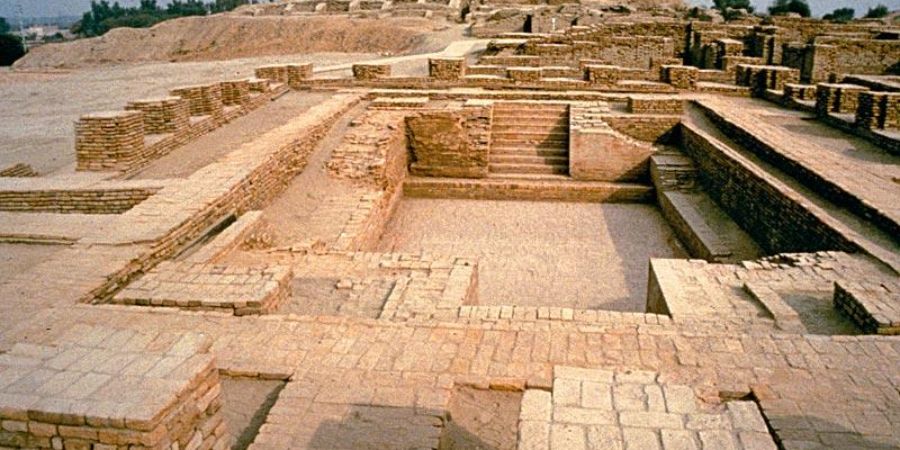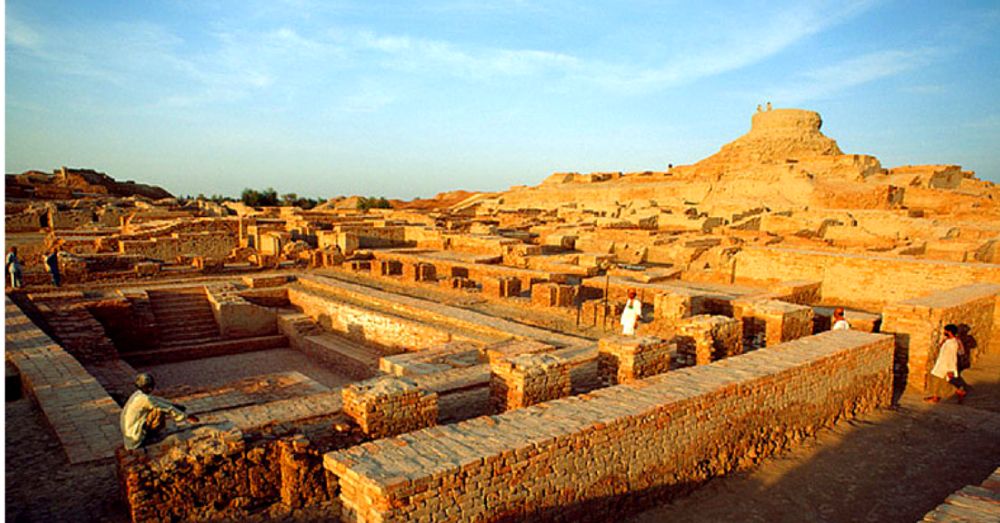

the word Mohenjo-Daro is a local name of a high mound situated in district of Larkana. Mohenjo-Daro means mound of the dead . It is about 300 miles north of Karachi . The surrounding region fertile and even now it is called Nakhlistan or the “ garden of Sindh ”.

Archaeologist believe that there was a city about 5000 years ago which was destroyed and rebuilt seven times . The city as it stands today, is on second mound .

The first thing that strikes a visitor to these sites , whether at Harappa or Mohenjo-Daro in Pakistan or Kalibangan , Lothal , is the town planning . One finds the streets and lanes laid out according to a set plan : the main street running from north to south and the cross streets and lanes running at right angles to them . at Kalibangan , among the north-south streets there was a principal one , 7.20 meters wide , while the other north-south streets were three- quarters of its width. The cross streets and lanes were half a quarter of the width of the narrower streets from north to south. such a typical and minutely planned residential areas were only a part of the entire statement complex have existed.
the citadel at Mohenjo-Daro contained many big buildings. All of them were made of kiln burnt bricks . There was the Great bath , the granary and the assembly hall .It is difficult to say that whether the Great bath had a purely secular use or used for religious function/ religious bath . it is summarized that beneath the stupa of Kushan period , situated hardly 50 meters to the east of the bath, there may be the remains of the temple . This is not improbable because a kind of worship place has been identified within the citadel at Kalibangan , closely associated with a well and bathing platform .
Between the bath and the stupa are the remains of the buildings 83 meters long and 24 meters wide , with a large number of rooms on three sides of a 10 meter square courtyard . The presence of staircases suggests that the possibility of more rooms on the first floor .It is suggested that it was the residence of “the high priest” or of “college of priest” .
Near the wall of the bath was a granary covering an overall area of 55 X 37 consisted of a podium formed by 27 blocks of solid brick work , arranged in three rows of nine each, and separated one from another by passages about a meter wide . Built on to the northern side of the podium was a platform , with a ramp going down to the ground level outside . To this were probably brought wagons full of wheat and barley for unloading .
Mohenjo-Daro is the most well known site to be discovered , it had a planned urban center like planned drainage system , planned domestic architecture etc.. at last its concluded that Mohenjo-Daro was the most advanced city of its time












